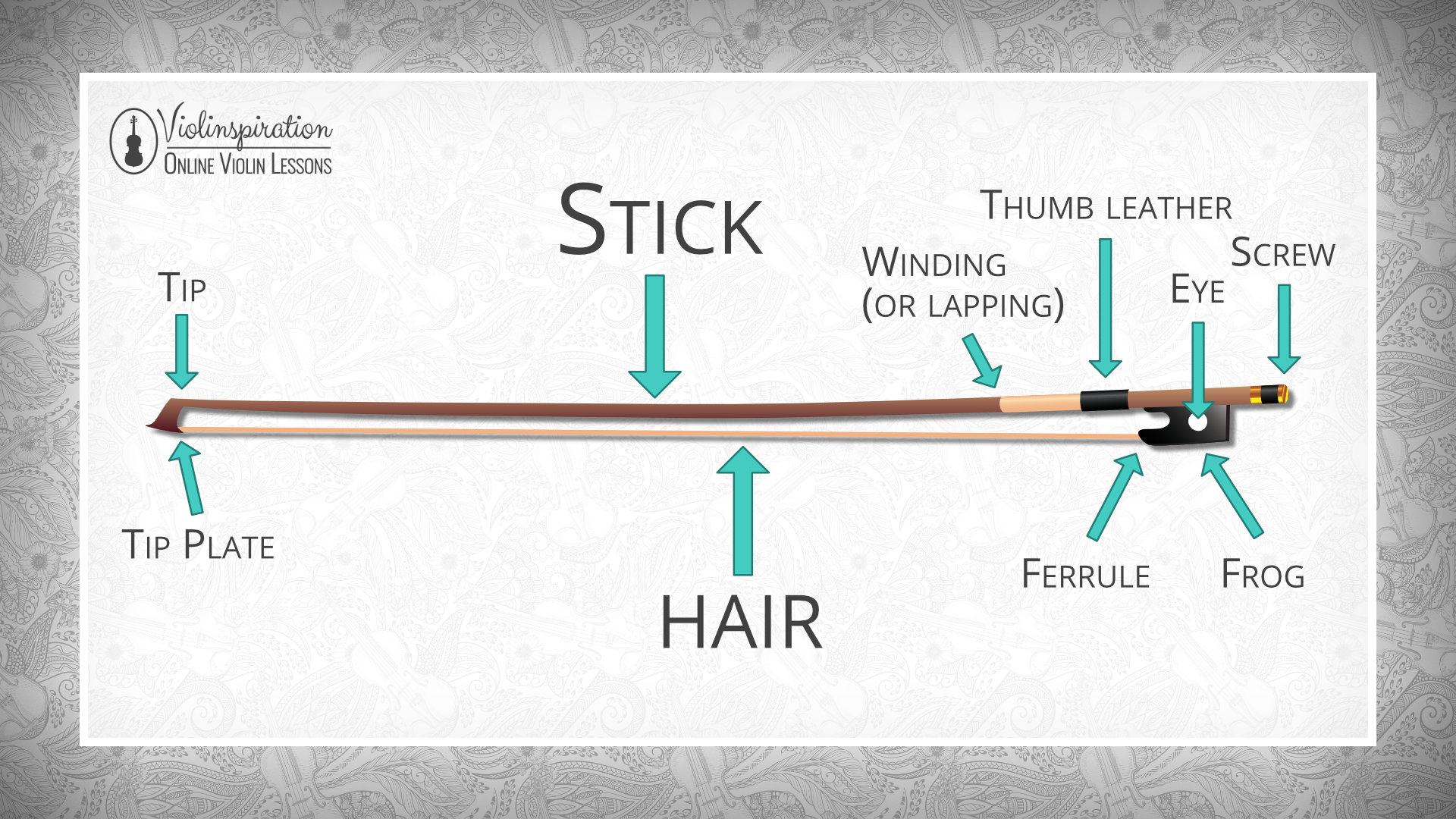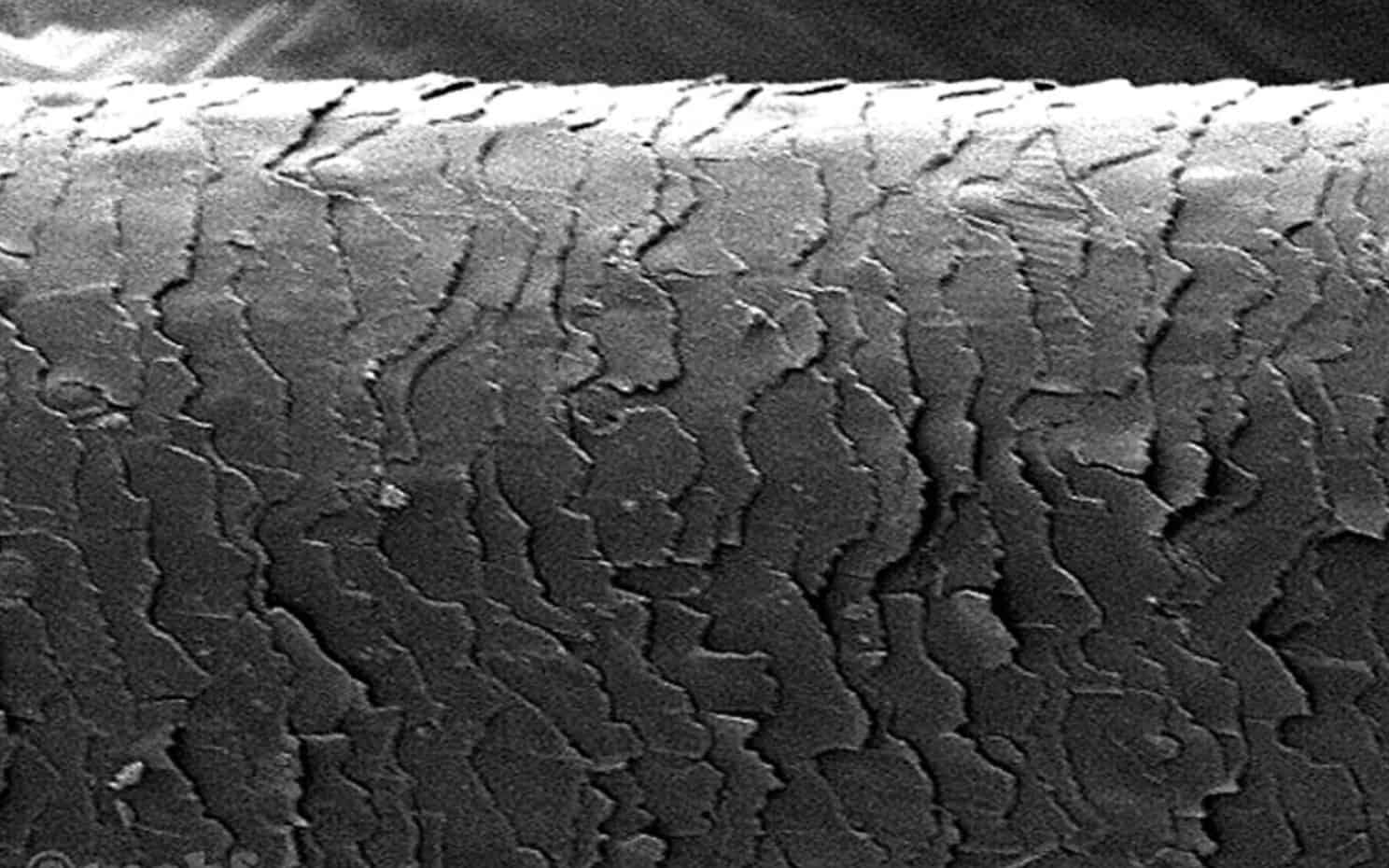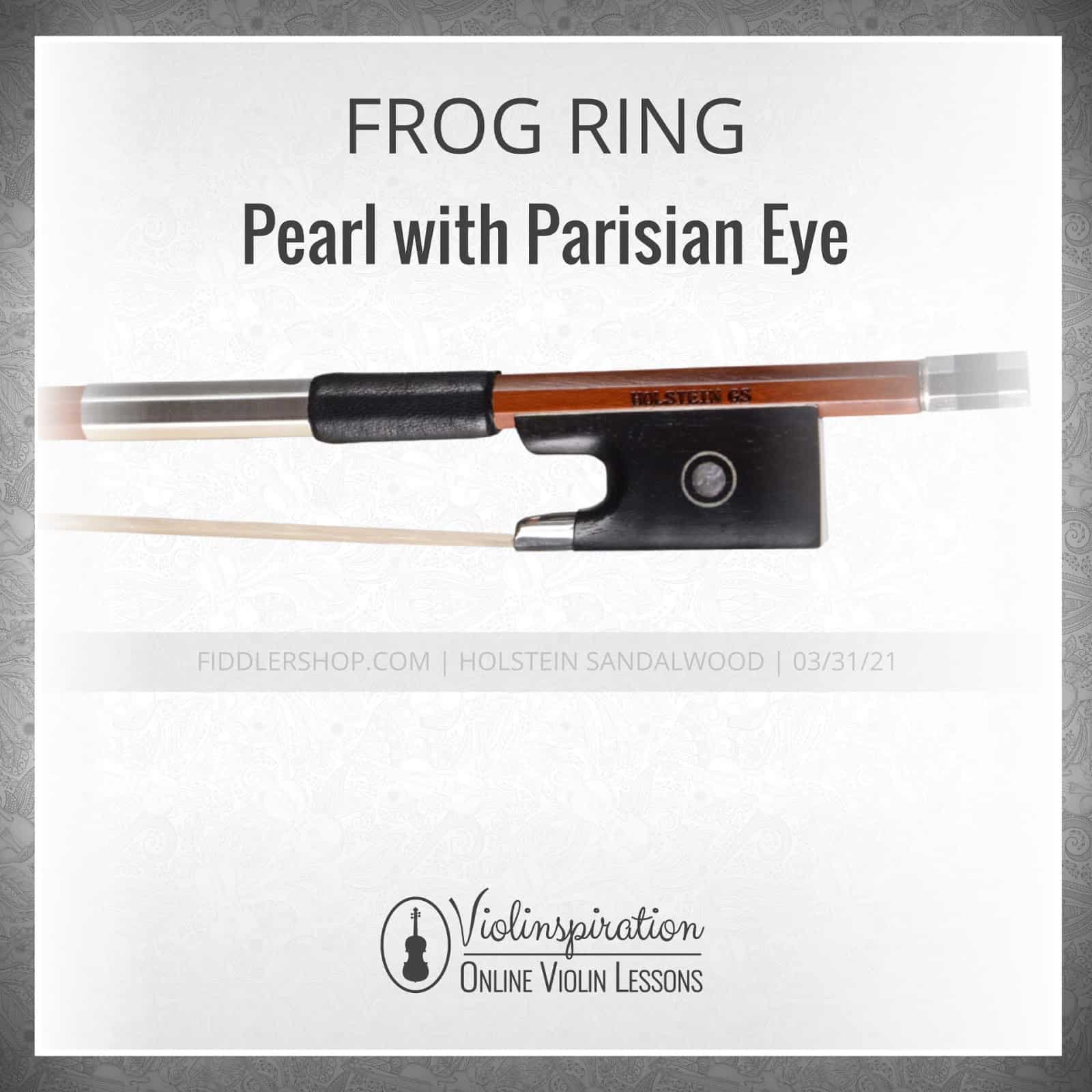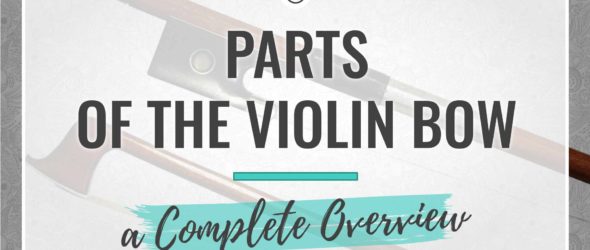Violins bows are made up of a stick, wood, horse hair, wooden, plastic or carbon parts – all working together to create a “magical wand” with which you can play beautiful violin music!
Every violin bow is different, but there are always three fundamental parts: the bow stick, the bow hair, and the frog.
In this article, I will show you all parts of the bow, so that you will easily be able to understand any violin technique video that mentions these parts.
Parts of the Violin Bow
Here is an image of the bow with names for every bow part:

Bow Stick

The bow stick is the most important part of the bow! It is usually made of wood or carbon fiber.
One of the most important features of the stick is the balance point. This is where the bow naturally balances if you place it at the tip of your finger.
The balance point

The balance point is different for every bow, but should be around 1/3rd from the frog end of the bow.
If you watch some YouTube videos or visit some lessons with a private teacher, you will notice that violin teachers mention terms like “the upper half” or “lower half” of the violin bow. These terms refer to special parts of the bow stick.
Upper Half of the Bow Stick

The upper half of the bow stick is the part that goes from the middle of the bow stick all the way towards the tip.
Often we use this part of the bow stick if we want to play softly, as the area close to the tip is naturally less loud than other parts of the bow.
Lower Half of the Bow Stick

The lower half of the bow stick is the part between the frog and the middle of the bow stick.
This can be a tricky part of the bow for many beginner and even intermediate violinists to play with! One reason for this is that we have to move our elbow upwards when playing in this area. This can feel like an unnatural movement in the beginning.
However, the lower half of the stick is also a very useful half to play in! Naturally, tones sound very loud and intense close to the frog. That is why violinists often use this part of the violin bow for notes that should sound intense!
Middle of the Bow

The middle of the bow is the most natural area to play in. With this in mind, it is also the area I recommend to start playing in as a beginner violinist. The tone in the middle of the stick is even and balanced. Also, it is the most comfortable part of the bow to play in.
Bow Hair

Bow hair is usually made from horsehair.
Quality bows in particular, use Mongolian or Siberian horsehair.
The reason for this is because there is a popular belief among most violinists that horses living in a cooler climate have hair that is thicker and stronger which is better for friction. This friction makes it easier to produce sound on a string.
If you look under a microscope you can see the tiny fragments or scales of hair on the surface of the hair shaft (see image below).

This rough surface grabs onto, and then releases, the strings on the instrument when you draw the bow across the surface of the string, causing the strings to vibrate.
Are All Bows Made with Animal Hairs?
No, not all bows are made with animal hairs. Vegan violin bows are available and are made with synthetic materials. Synthetic bow hair can mimic the texture and performance of horsehair.
Coruss is a company that has developed a wonderfully performing synthetic bow hair that mimics horsehair. They even make the hair in 7 different colors.
Violin Bow Tip

At the tip of the bow, the hair connects with the stick of the bow.
The tip is created with a small piece of wood that is attached to the bow. It is true craftsmanship!
The weight of the tip is an important factor in the quality of a violin bow. It should not be too light – nor too heavy. Only expert violin makers and players are able to distinguish a great tip from an average one.
Violin Bow Tip Plate
The violin bow tip plate is a little protectional cover of the tip.
The tip plate of the bow may be made from a range of materials, such as ivory, synthetic materials or silver.
Here you can see a video of the tip plate of the bow getting replaced.
Violin Bow Winding

The violin bow winding is placed right beside the leather wrap. It offers another layer of protection for the wood from the hand of the player.
Usually it is made with a metal material such as nickel.
Expensive bows often have wrappings of silver and some even have winding made of gold!
Thumb Leather

The thumb leather is a small wrap of leather used to protect the wood of the bow where the violin player’s hand will be located.
As the name says, it is usually made out of animal skins. Some of the finer bows are even created with reptile skin.
There are also more animal-friendly alternatives to a leather wrap that are made with artificial leather or plastic.
Violin Bow Frog

The frog is a small piece of ebony (usually) that sits between the grip and the screw.
The purpose of the frog is twofold. On the one hand, the frog creates a space between the hair and the stick so the stick can have a significant amount of inward curve and yet the hair doesn’t contact it. On the other hand, it holds the mechanism for tightening and releasing the bow hair.
The frog is usually the part where violin makers can be very creative. That is why you might have seen that there is a wide range of frog types available!
Eye of the Violin Frog

Most quality frogs have special inlays, for instance golden, silver, or nickel plates. Many screws also feature a piece of nacre (mother of pearl) – which is the white dot in the middle of the screw.
Some frogs have an extra line around the pearl, called a “Parisian eye”.

Others even have an extra line of silver or nacre at the part where the frog connects to the bow.
One of the ways to recognize a high quality bow is to have a look at the screw – and see how many touches the builder added to the bow.
Ferrule of the Violin Frog

The ferrule is a removable plate of metal at the bottom of the frog.
It is used to protect the place where the bow hair gets attached to the violin bow. It can be removed if the bow hair needs to be replaced.
Screw

The screw sits at the end of the bow opposite the tip. You use it to loosen and tighten the bow hair.
The screw of the violin bow is used by violinists before and after every playing session!
It holds the mechanism which you use to tighten and loosen the horsehair every time you play your violin.
























